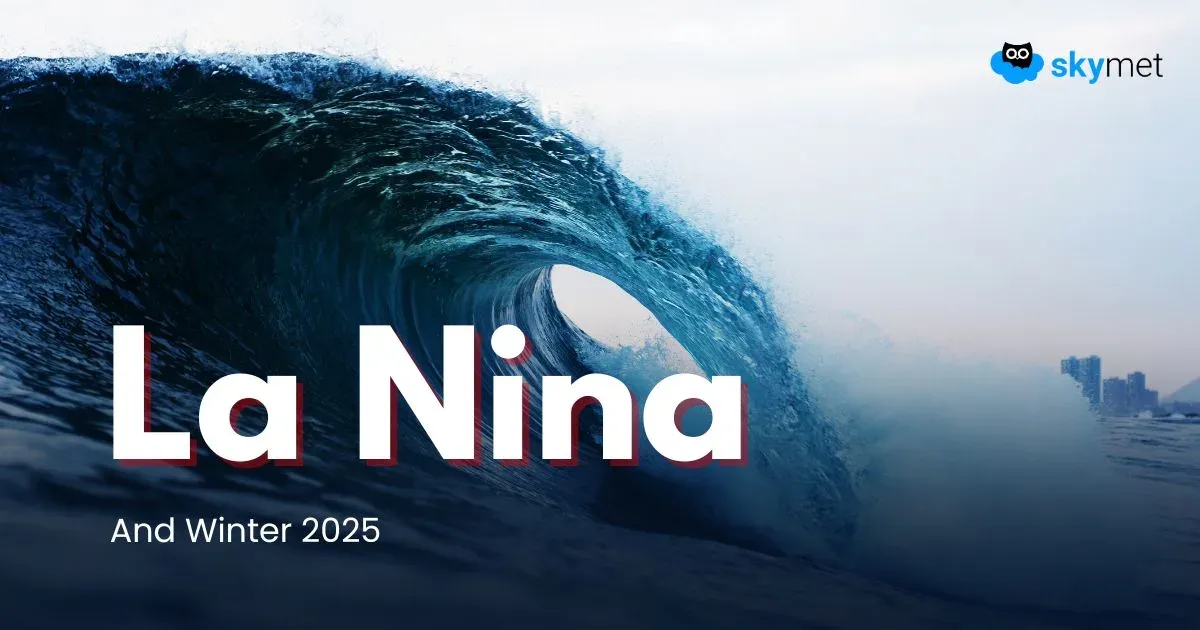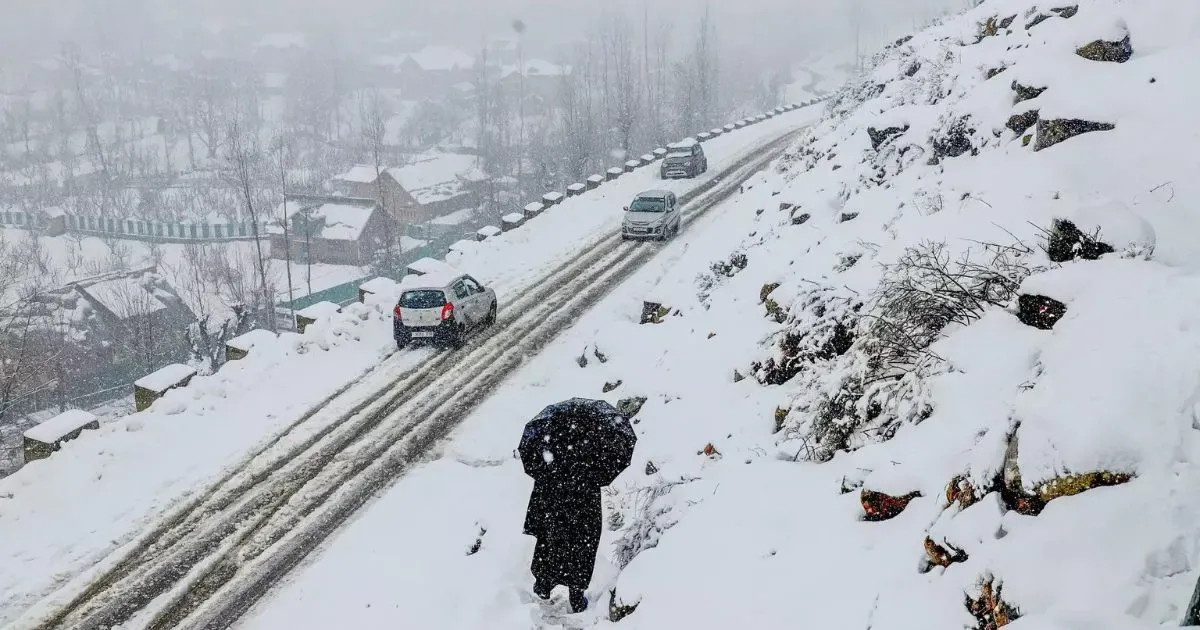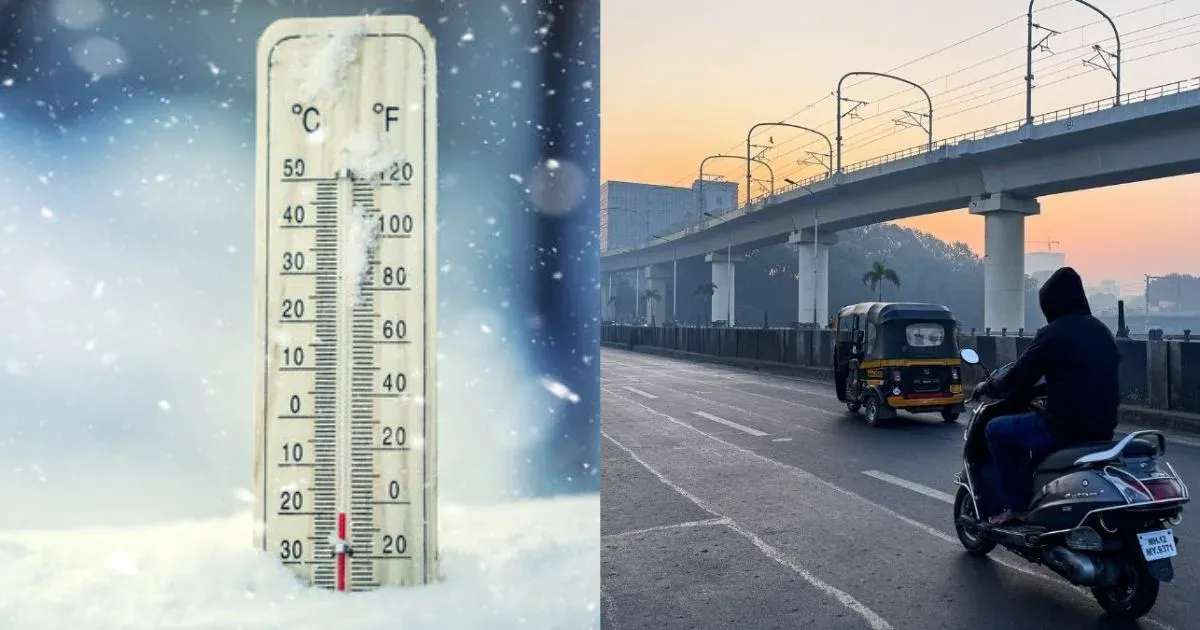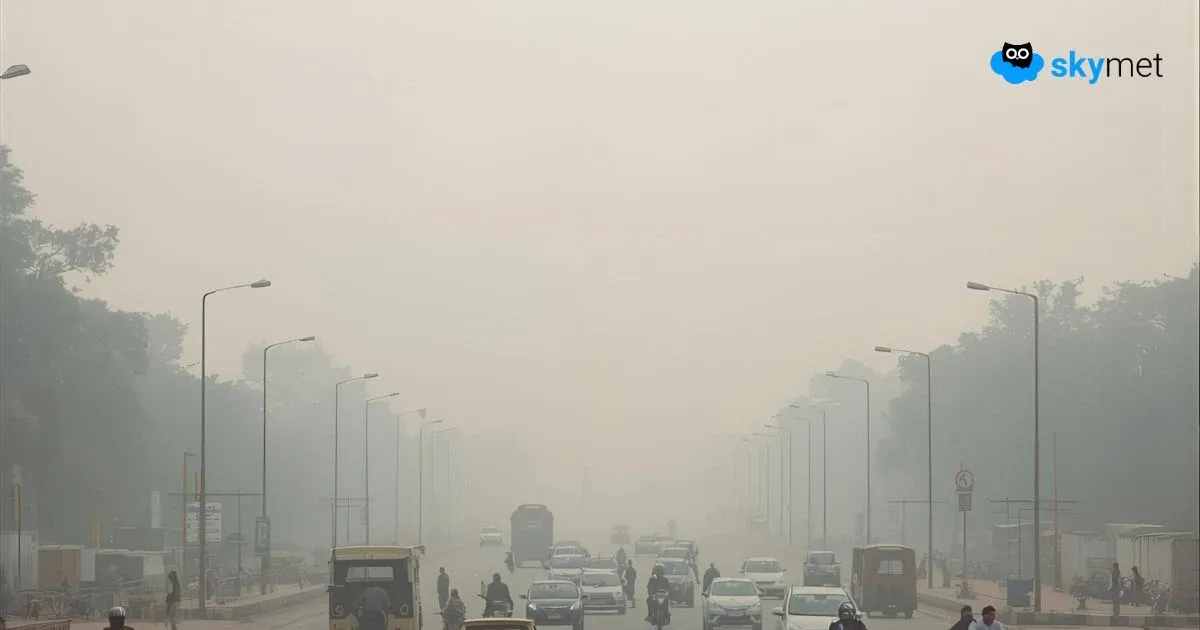ENSO and IOD Both Neutral, MJO Incoherent Too: Monsoon May Slow Down
ENSO-neutral does not mean that the sea surface temperature is equitable across the complete equatorial Pacific Ocean. There will still be pockets of 'warm' and 'cool' embedded in the overall pattern. The location of 'warming,' if any, not just the strength, in the Pacific may possibly have an influence on the Indian monsoon.
A case in point is the location of warm water, which shifted from the Central Pacific in 2002 to the Eastern Pacific in 1997. The result was that 1997 was a normal monsoon with seasonal rainfall of 102% of LPA, and 2002 was a drought year when the monsoon got spoiled with rainfall of 81% of LPA.
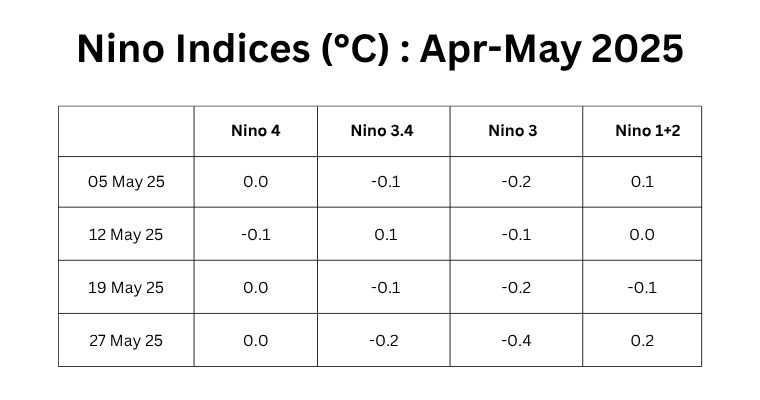
Research suggests that the degree to which the Walker Circulation shifts can affect the Indian Monsoon performance. If ocean warming is there in the Central Pacific, the sinking branch of the circulation expands to include India, reducing the seasonal rainfall. However, if the warming shifts to the far Eastern Pacific, the sinking column may not affect the Indian monsoon but corrupt rains over Indonesithe Southeast Asian region.
Under ENSO-neutral conditions, the southwest monsoon was spoiled in 1952 (92%), 1991 (92%), and 2004 (88%), and rains were bountiful in 1959(114%), 1961(122%),0 (106%), and 2013 (106%). Essentially, even in the ENSO-neutral years, the position of the 'warm' and 'cool' pockets, if any, in the Pacific Ocean will be decisive for the fate of the monsoon.
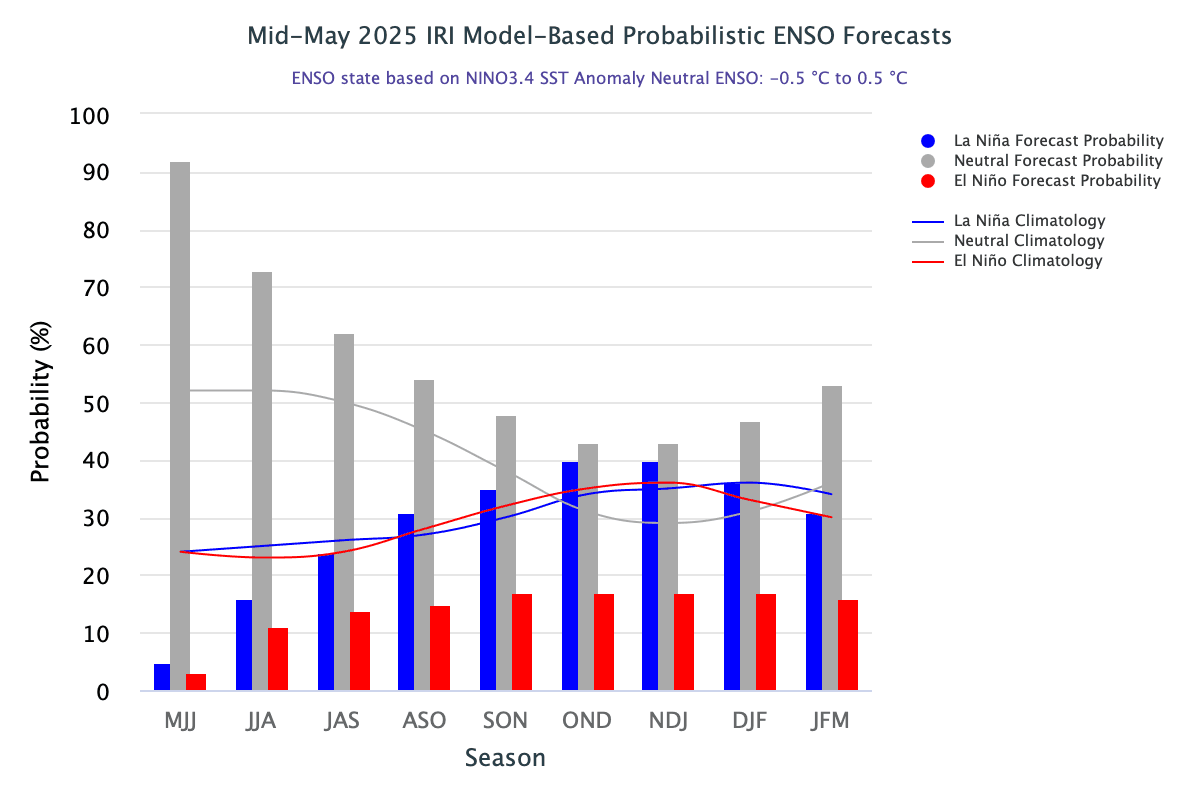
ENSO: Equatorial sea surface temperatures are near average across most of the ocean. Ocean. ENSO-neutral is favored through the Northern Hemispheric summer of 2025 (74% chance during Jun-Aug), with chances exceeding 50% through Aug-Oct 2025. Caution is advised in interpreting the forecast distribution, as the actual probabilities may defy norms due to differing biases and performance of different models. At longer leads, the skill of the model degrades, and therefore the uncertainty in skills must be read in conjunction with the variation in the initial conditions and the model physics.
The SST anomaly in the Niño 3.4 region during the month of May 2025 remained between +/- 0.1 degree. The most recent weekly average of the Nino 3.4 index, as of 262025, May 2025, was degrees. ree. There is no legible pattern emerging out of the Nino indices in the equatorial Pacific. ENSO-neutral conditions are likely to remain, more or less, unsettled, maybe for another few weeks.

IOD: The Indian Ocean Dipole is neutral. The latest value of the IOD index for the week ending 25th May was 0.28 degrees. After staying above the threshold for three weeks, the index has dropped back to the neutral range for the second consecutive week. Most models predict a neutral state of the IOD until at least July 2025 and possibly a negative turn thereafter. Caution needs to be exercised, as the IOD forecast made at this time of the year has been historically low beyond 1-2 months ahead.
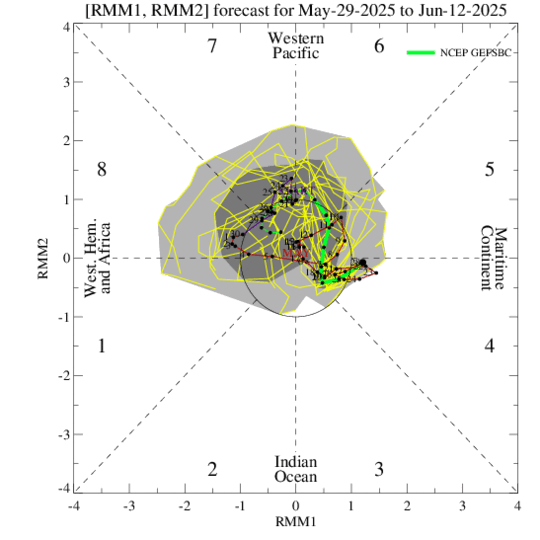
MJO: The Madden-Julian Oscillation remains incoherent, though the forecast is depicting eastward propagation from Phase 4 to Phase 7-8 in the coming weeks. There is a lot of dichotomy with regard to the sign strength, and clarity is unlikely. With the likely continuation of weak MJO activity and ENSO-neutral conditions, the tropical variability will be controlled predominantly by other modes like Kelvin and Rossby waves.
With hardly any support from the oceanic parameters, the monsoon may slow down a bit in the coming week. The progress may become sluggish and could stall as well for a week or ten days. Invariably, the revival takes place on the development of a fresh system in the Bay of Bengal.



